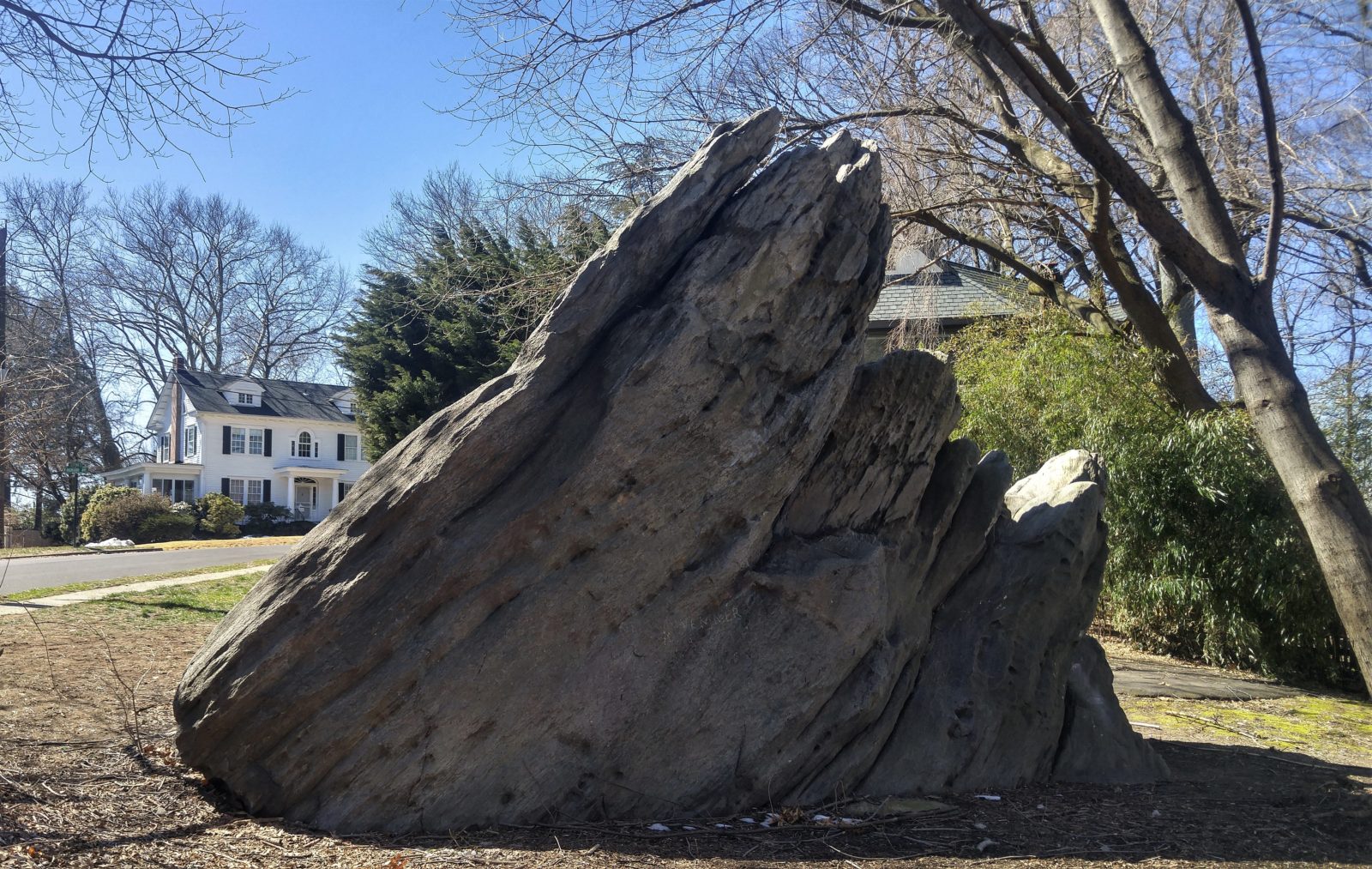Graystones where Bucks County began in 1682 nearly was lost to development.
King Charles II awards the colony of Pennsylvania to William Penn (right) in 1680 as depicted in this historic oil painting
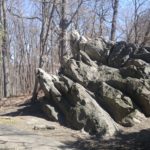
It’s really hard to believe that less than 20 years ago one of the state’s most historic sites nearly perished so a proposed high-density townhouse development could be built.
Graystones Forest is where an agent of William Penn purchased from Lenape Indians what was to become Bucks County in 1682. Thanks to Morrisville citizens and county government, the complex never was built. Rather the hallowed site – an unusual gray rock formation in a 6-acre, old-growth hardwood forest – has been preserved. The forest’s red oak trees typically live more than 500 years. the second-oldest stand in Bucks dating back before Penn’s time. The only older woodland is 22-acre Harris Woods in Doylestown, according to a 1977 survey by Delaware Valley University.

Margaux, Dashiell, Genevieve and I visited Graystones recently to see for ourselves where our county began. Also to climb about on the 20-foot-high outcropping on Morrisville’s north side, explore the woods and try to imagine how it must have been 336 years ago. A white oak once stood in front of the jagged bedrock. Under that tree William Markham, Penn’s cousin and captain in the British Army, met with local Indians on July 15, 1682 to negotiate for Penn the first land purchase in the colony. The agreement stipulated the northernmost border of the purchase would be a survey line drawn from the Delaware River nine miles above Graystones where Knowles Creek joins the river in Upper Makefield west to Neshaminy Creek in Wrightstown. All territory enclosed by the Neshaminy and the river below the survey line would be Penn’s property – today’s Bristol, Bristol Township, Falls, Tullytown, Morrisville, Middletown, Lower Makefield, Yardley, Newtown, Newtown Township, Upper Makefield, Langhorne, Hulmeville, Penndel and most of Wrightstown. Penn named the 130-square-mile tract Buckinghamshire for his ancestral home in England. It later was shortened to Bucks.
I had a copy of the original Graystones indenture to show the kids. But it was hard to determine what exactly the Indians received from Penn. Experts believe it was a liberal amount of cash, trading beads and merchandise.
British King Charles II gifted the colony to Penn to settle a debt to his deceased papa, Admiral Sir William Penn. Bill the younger wanted the tract to be called “New Wales”, then “Sylvania”, Latin for “woods”. The king decided on “Pennsylvania” to honor Penn’s dad. Young Bill was annoyed; thinking people would believe he named the new province after himself. The king insisted however as Penn set sail on the ship “Welcome” for the two-month crossing of the Atlantic. About 70 Quaker settlers came with him, one-third of whom died en route from small pox.
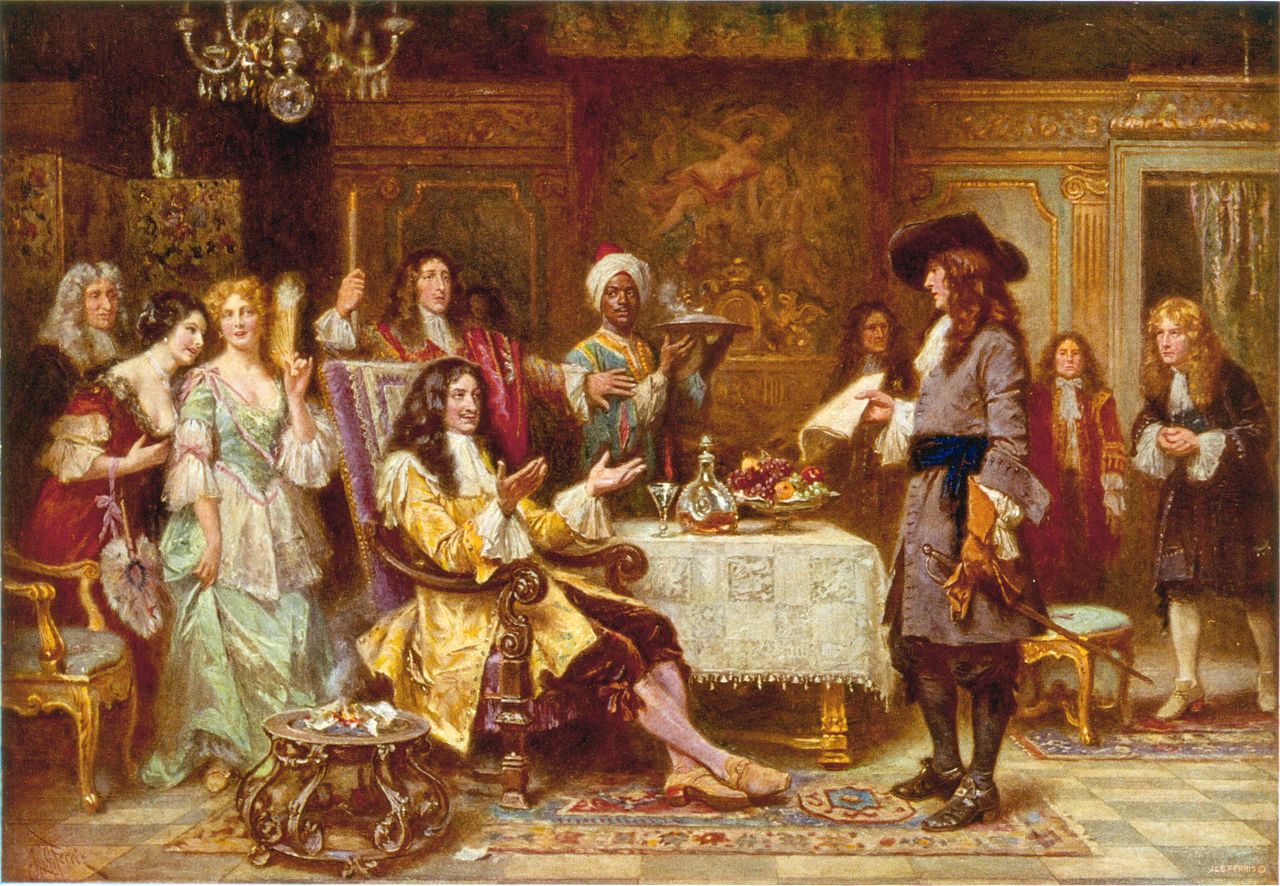
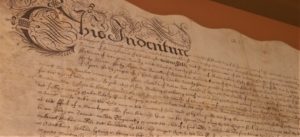
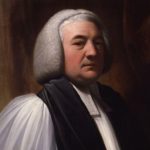
Cousin Markham arrived about six months earlier and got to work following specific instructions: Set up a governing council. Survey, lay out, rent or lease lands. Determine where to build Philadelphia. Establish courts of law, and appoint sheriffs and justices of the peace to keep the peace. Markham also selected the site of Penn’s country manor in Falls and meet with Indians at Graystones to buy the vast estate. Penn made it clear European immigrants would not populate the wilderness “without the Indians’ consent.”

Penn later met with tribal leaders with assurances under an elm tree landmark in Philadelphia: “I have a great love and regard for you, and I desire to win and gain your love and friendship by a kind, just and peaceable life. The people I send are all of the same mind, and shall in all things behave themselves accordingly. If in anything any shall offend you or your people, you shall have a full and speedy satisfaction for the same by an equal number of just men on both sides.”
The deal at Graystones set the pattern for 22 deeds Penn secured that would enlarge Bucks to include Bensalem, Lower and Upper Southampton and Warminster, plus create Philadelphia and Chester counties.
Over the centuries, Graystones Forest has dwindled. By the 20th century, the monolithic stone remained untouched as a landmark at the corner of Crown and Highland Avenues. Built around it in the 1920s were grand, 4,500-square-foot homes in the Morris Heights neighborhood. In 1929, the Bucks County Historical Society dedicated a vertical red stone slab with a bronze tableau memorializing Penn’s purchase at the site of the tree that succumbed to old age in the 1800s.
Graystones Forest today dips steeply to the Delaware River and has remained unspoiled since Penn’s time. However in the 1990s, a developer proposed turning the site into a townhouse development. That’s when the alarm bell sounded. With the support of local residents and the borough council, county government by 1997 rounded up enough open space cash to buy the property and make sure the origins of Bucks County would not fade away.
Sources include “First Purchasers of Pennsylvania” by Matthew A. Zimmerman; the Penn Treaty Museum in Philadelphia, curator Todd Galle at Pennsbury Manor Museum in Falls; and William Mitchell of the Bucks County Department of Parks and Recreation.

